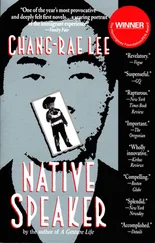* * *
Should we be surprised to find these urgent feminist concerns addressed in a work of science fiction? That has been the initial response of some feminists. For example, when Carolyn Heilbrun reviewed Native Tongue in 1987 for the Women’s Review of Books , she described herself as “a non-reader of science fiction” (17). Despite her self-confessed “resistance to SF (not that I dislike it, but that I can never figure out what’s going on),” Heilbrun gave Native Tongue a glowing review: “There isn’t a phony or romantic moment here,” she observed, “and the story is absolutely compelling” (17). It is worth asking why science fiction has been anathema to many feminists, and worth offering a quick list of the reasons science fiction deserves a feminist audience. Feminist distaste for science fiction must be more than simply a response to its relatively low status as “genre fiction,” since other forms of genre fiction, from the detective novel to the romance, have their staunch feminist adherents. Responding to the historic linkages between science and its traditional values — especially masculinist objective rationality — feminist readers and critics have challenged science as a method of inquiry about the world. They have tended to avoid scientific issues, themes, plots, and images, focusing instead on the crucial projects of reclaiming forgotten women writers, questioning the gendered nature of the literary canon, and imagining alternative forms for literary expression (Squier 132–158).
“Toys for boys”: all too often, this phrase has seemed to accurately sum up the science fiction genre. But precisely because science and science fiction have seemed the rightful terrain of men at their most macho, feminists should give the genre their renewed attention, revitalizing its form and its content. The issue is, as Elgin has taught us, linguistic at its core. Until we abolish the culturally enforced hierarchical relations between science and the humanities that maintain literature as an insignificant, invisible, and feminized part of our culture in relation to significant, visible, masculinized science, we haven’t made the large-scale linguistic transformation that Elgin herself calls for. We are still representing the world by gendered binary pairs (male/female; science/literature), and ceding to males the science half of the two-culture divide. Science , in short, is as open to feminist redefinition as any of the other words in our lexicon. Rather than abandoning it, we simply need to encode it anew and reclaim it as one of our native tongues.
The scientific study of alien species, a classic science fiction focus on the future, and a feminist preoccupation with the science of linguistics connect science fiction and feminism in the three interrelated narratives that compose Native Tongue . The primary story follows the development of the woman-language Láadan by the women of the Linguist Lines, especially the protagonist, Nazareth Chornyak Adiness. A parallel story line traces the U.S. government’s secret attempts to break the linguistic monopoly of the Lines by successfully learning, or “Interfacing” with, a non-humanoid alien language. A third narrative strand follows Michaela, a non-linguist, as she attempts to avenge her infant, who was killed in a state experiment to break the language monopoly; instead she finds surprising commonality with the linguist women. While these three narratives do not always connect smoothly, taken together they explore the constructive power of language, the origin of gendered oppression, and the material and social commonalities between women.
Elgin explores the nature, power, and significance of language through the distinction between humanoid and non-humanoid languages, and the different worldview each constructs. Any language is a limited set of perceptions and expressions; the rough similarity of humanoid languages, and thus the rough correspondence of their worldviews, is what allows them to be Interfaced. Dramatically different worldviews separate humanoid and non-humanoid languages, and thus the realities they construct, which explains the dangers of Interfacing humanoid and non-humanoid languages. The government technicians, in an effort to work through the problem of non-humanoid languages, articulate the relationship of language to reality:
“First principle: there’s no such thing as reality. We make it up by perceiving stimuli from the environment — external or internal — and making statements about it. Everybody perceives stuff, everybody makes up statements about it, everybody — so far as we can tell — agrees enough to get by, so that when I say ‘Hand me the coffee’ you know what to hand me. And that’s reality. Second principle: people get used to a certain kind of reality and come to expect it, and if what they perceive doesn’t fit the set of statements everybody’s agreed to, either the culture has to go through a kind of fit until it adjusts… or they just blank it out.” (140)
Elgin puts it this way in the epigraph to chapter 13: ‘“For any language, there are perceptions which it cannot express because they would result in its indirect self-destruction”’ (145). Thomas Chornyak describes the failure to Interface with non-humanoids as an intrinsic limitation: “It was distressing, but it was not ridiculous. No human being could hold his breath for thirty minutes; that was a natural barrier, and one learned not to fling oneself at it. No human being, so far as he knew, could share the worldview of a non-humanoid. It was not ridiculous” (66). The Government Work technicians articulate the intrinsic limitations more specifically as ‘“human beings are hardwired to expect certain kinds of perceptions”’ (140). Language, then, is both biological, in that our biological brains can form certain kinds of perceptions, and cultural, in that every language and culture uses a smaller set of perceptions and expressions from the larger set of hardwired possibilities.
This imbrication of the physical and the social is demonstrated most forcefully when the technicians pursue the experimental Interfacing between human infants and non-humanoid aliens despite warnings of disaster from the linguists. The leader of the group, Showard, finally concludes, “‘There’s something about the way the non-humanoid aliens perceive things, something about the “reality” they make out of stimuli, so impossible that it freaks out the babies and destroys their central nervous systems permanently’” (141). One infant, in an attempt to Interface with Beta-2, the resident non-humanoid alien, had convulsed so violently that it “literally turned itself inside out” (48). That the problem is not simply one of human linguistic and cognitive limitations is demonstrated by the subsequent experiment, in which the technicians try to alter consciousness and thus worldview by feeding the infants hallucinogens (186). This time, when they get the dosage “right” and Interface the infant, it is the alien being, Beta-2, that goes mad and dies, showering sparks throughout the Interface (188). The infants who survive the experiment cannot, so far as other people can tell, communicate in any way comprehensible to humans, although they appear normal and healthy.
The constitution of reality through language is more than simply a psychological effect in Native Tongue . As the Interfacing experiments reveal, language has the power to fundamentally reorder the material world, producing vibrant life or violent death. Moreover, language is constitutive in a number of other ways. A large part of the popular prejudice against linguists stems from their ability to manipulate verbal and non-verbal language. John Smith, a government liaison to the linguists, “knew that there was absolutely nothing an ordinary citizen could do if a linguist decided to structure an encounter in such a way that that citizen would look like a perfect ass” (63). And he knows this is also true of the linguist women: “Oh, they observed all the forms, those women; they said all the right words. But they had a way of somehow leading the conversation around so that words came out of your mouth that you’d never heard yourself say before and would have taken an oath you couldn’t be made to say” (63). Examples of this linguistic power dynamic abound, both between linguists and citizens (“Thomas tilted his head a fraction, and Jones felt deeply inferior for no reason that he could understand” [63]) and between male and female linguists. For example, Rachel is unable to countermand her training as a linguist and resort to tears (“Women of the Lines learned early not to give in to tears… because tears destroyed negotiations” [149]) and she thus fails in her attempt to dissuade Thomas from marrying Nazareth to a powerful linguist she hates. In fact, a frequent refrain in the book is “you can’t lie to a linguist.”
Читать дальше












